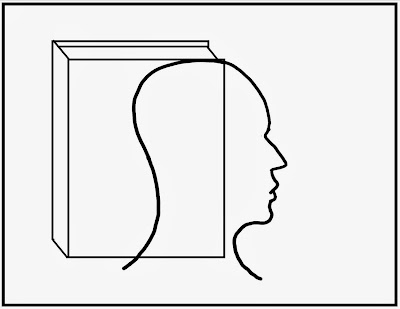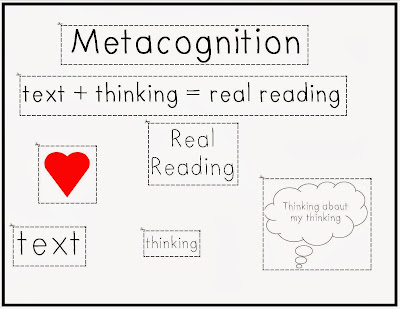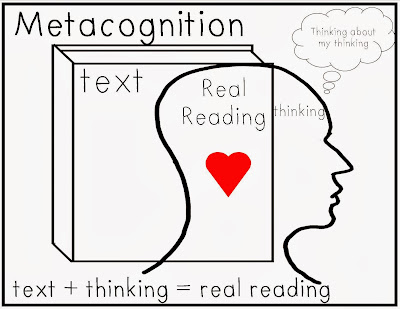Hi everyone! It's Bex from Reading and Writing Redhead with some phonics recommendations. Read on to learn more, see what it might mean in your classroom and for some resource ideas!
Why is phonics instruction so important? I went to school (and student taught) when it seemed like whole language was all the rage. Luckily for me, I found it easy to learn to read and write. Things came naturally to me so I did not have to have phonics instruction in order to succeed as a reader. Unfortunately, that is not going to work for all students. As a reading specialist, I am always thinking about those students who are struggling. We now know that learning phonics will help children learn to read and spell. Written language is like a code, so knowing what sounds the letters and combinations of letters make will help students decode words while reading. Knowing phonics skills will also help students decide what letters to use when they are encoding (or writing words down- or these days, perhaps writing them in a text message or on social media?).
The National Reading Panel examined tons of reading research to find out what it tells us about teaching phonics. I could explain in more detail what kind of studies they used, and how they did it, but let me give you the abridged version. After analyzing all the studies, the National Reading Panel determined that phonics is an essential part of beginning reading instruction. Specifically, systematic and explicit (follows a particular order/sequence and is directly taught) phonics instruction is more effective than other kinds of phonics instruction or no phonics at all.
What might systematic and explicit phonics instruction look like in your classroom?
- teaching letter shapes and names
- teaching phonemic awareness
- teaching sound/spelling relationships of both consonants and vowels
- ensuring that students have tons of practice applying the knowledge of letter-sound relationships as they learn to read
- ensuring that students practice this knowledge when learning to encode (spell words in their writing)
- using texts that contain many words students can decode using what they have learned
- providing students with opportunities to practice spelling words and writing stories while applying their knowledge of letter-sound relationships
Research has shown that students who received phonics instruction in kindergarten or grade 1 are more successful in learning to read than students who did not. Okay... but WHY is this? I suppose it is for several reasons. A few I can think of may be that kindergarten and first grade is when the bulk of getting students to "learn to read" occurs. After first grade, most children know how to read and you might only teach basic phonics skills systematically to students who have never had it and are also struggling to read. I can't imagine a teacher saying, "This student is new to our school and never was taught phonics, and is reading above grade level, so we need an interventionist to teach her phonics skills". So, if students receive appropriate instruction in phonics from the get go , they will be less likely to struggle, and those struggling students who never had phonics and who start learning later than grade one tend to not make as much progress and see the same type of success?
Of course, phonics can be taught to older students and can be used with older students by doing activities with suffixes, prefixes, word origins and more!
It takes a while for a student to get to where has has instant recognition of words. In the meantime, teaching phonics helps students improve word recognition skills by providing information on which letters and letter combinations make what sounds (such as that ir, er, and ur all make the same sound). Also, with an understanding of more advanced concepts like rhyming and syllabication, the student has a lot of tools that he can keep in his reading "toolbox" for when he comes to new words when reading.
As far as comprehension, if a student can recognize or decode words quickly and easily, he is much more likely to understand what he is reading.
With spelling, what usually happens is as a child's reading skills improve, so does his spelling. Instructing students on letter-sound relationships also your student tools to use when trying to encode (spell) a new word. For example, if a student wants to write the word "turn" but has never done so, he can draw on knowledge that t makes the first sound of turn, n is the ending sound, and that the middle sound is probably er, ir, or ur. This is why when students are learning to spell you may come across spellings that are close and that make sense, but not quite correct, such as "tirn" for "turn".
Quality phonics instruction helps students no matter what their background may be. I don't know if there is much that needs to be explained here, but even if a child comes from a home where there are no reading materials, or if a student is an ELL student, effective phonics instruction gives them the tools to decode words and develop their skills as a reader.
Reading Specialists are often doing phonics interventions with students who need extra help; however, classroom teachers can and should teach phonics to all students. Here are some general tips, whether you are teaching your whole class or a small group (or tutoring an individual student).
- Focus on a few regular sound and spelling patterns and then move into irregular sounds and spellings later
- Include a lot of practice (fun, not tiring!). There are tons of resources to make phonics instruction and practice fun.
- Use multisensory materials and strategies. Paper and pencil gets tedious!
- Frequently review previously taught material, especially with students who have struggled to learn to read. This will ensure they do not lose skills they previously learned.
- Include words and text at an appropriate developmental level for the students
- Give immediate feedback if students make errors - it may be better to correct them so they don't learn it wrong, but you can give feedback in a positive way rather than be overly critical.
- Frequent assessment (formal and informal) will help you see if students are making sufficient progress.
So phonics is important, but research and experience has taught us that the best reading programs are well balanced. Students should be working with the alphabet, doing phonemic awareness activities, listening to stories and texts read aloud, reading texts themselves, and practicing writing in whatever way is appropriarte (words, stories, letters, poems...)
Also, keep in mind the major areas of reading instruction: phonemic awareness, phonics, vocabulary, fluency, and comprehension. If you want to see our other blog posts of those topics, click on the "Topics" heading up at the top of our page and find the one you want to see more of!
Resources
Here are some resources for phonics instruction that I have come across. Do you have a resource to share or a link? Please comment below and let us know!
Geraldine Giraffe Videos - my class loves her! She is a puppet that teaches phonics skills. The link will take you to Mr. Thorne's youtube channel. he also has awesome lessons that he does himself without Geraldine.
Teachers Cauldron's Reading Mini Lesson with Phonics
Make Take Teach's Phonics Folder Games and Actvities and segmenting and blending activities
Teacher Mom of 3 has a guest blogger with great information about phonics and some resources
Applicious Teacher has a helpful post about phonics in action with some resources for you
Run! Miss Nelson's Got the Camera shares some fun way to teach phonics
Games 4 Learning has a phonics freebie
Heidisongs has a detailed post on the DIBELS (reading assessment) and what phonics skills are involved, aslong with resources to help students
Sarah Winchell's Teaching Resources for the Classroom always has great information and freebies for you. a recent post has a free phonics game.
On Teachers Pay Teachers Marsha McGuire has a throrough resource of word work.
Karen Jones has a huge phonics pack you can check out.
You can also take look at my Mystery Words Pack or the individual sets to help students review common letter and sound combinations.
Online games and activities include:
Phonics games at a UK site
Phonics games online Family learning
Starfall's website


































